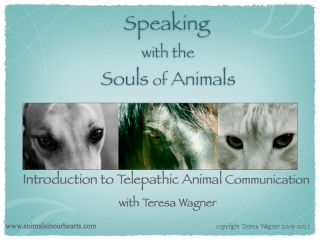Animal Communication
|
I have always believed that there are three distinct windows of understanding through which we can view, support and care for our beloved animal companions: 1. Through medicine and healing we keep our animals healthy.2. Through training and understanding species specific behavior we learn to live together safely and within acceptable boundaries. 3. It is only through love, however, through the portal of the heart, that we come together as fellow souls, to communicate what is most important to one another and to grow in intimacy and harmony. It is through this third window—the path of empathy, compassion and love—that we employ the universal, natural skill of telepathy to learn what individual animals are thinking, what they're feeling, what they may need, and who they really are inside. And it is through this window, this path of acknowleding the souls of animals with love and respect, that communication with animals becomes sacred. When we love animals and want to honor and effectively communicate with them, we must relate to them not only via their physical bodies and observable behavior, but also beyond biology and behavior--to acknowledge and communicate with them at the level of their souls.
Scroll down to the menu box to follow the links to learn much more about about animal communication.
We are all natural animal communicators. Learn to bring out your natural telepathic ability to communicate in the
This webinar is ideal for anyone who is curious about how animal communication works, for those who want to begin their education on how to communicate with animals, and for those who may want to add additional viewpoints to what they have already learned about communicating with animals. |

A professional animal communicator since 1991, Teresa offers consultations with gentle compassion, empathy and love for both your animals and you. Her animal communication work is with animals both here and in the afterlife and she communicates with all animal species. She also offers classes in animal communication and grief support, facilitated sacred journeys to swim with and communicate with humpback whales, and has created a number of products to help people communicate with animals and heal their grief. Full Bio. 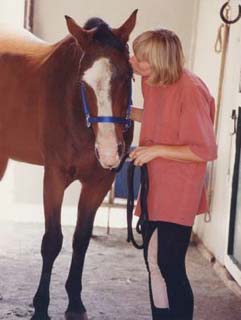
Wings and Martha

Bart
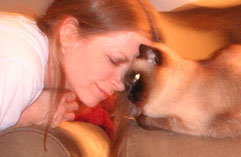
Robin and Ming
|

Some of the situations in which you may find it helpful to talk with your animals with the assistance of an animal communicator include:
-
Deepening your understanding, intimacy and sacred bond with your animals by discovering what they are thinking, feeling and what means most to them
-
Understanding how your animals view their lives, their everyday likes and preferences and needs
-
Understand how your animals view your relationship, the purpose of your coming together, and how any past life issues may be relevant to the present
-
Behavioral Problems: Discovering the causes, negotiating changes and solutions
-
Understanding emotional issues such as fear, aggression, withdrawal, depression etc.
-
Helping to heal trauma, such as from injury, illness, death or grief
-
Helping rescue animals to understand sheltering and fostering, identify what they want in a new home (i.e. kids, other animals), adjust to new family and home, heal from neglect, abuse and abandonment
-
Understanding animals' view and experiences of illness and health problems; preparing an animal for surgery or other medical interventions
-
Supporting and understanding your animals' needs through death and dying
-
Talking with the Spirit of your animal after their death
-
Understanding and support through reincarnation reunions
-
Supporting and understanding your animals' needs through grief and anticipatory grief regarding death of other family members (animals grieve the death of animals and humans just like we do)
-
Helping your animals understand family structure changes: new arrivals of animals or humans; discussing your animals' needs before adding a new animal family member; departures of animals or humans through divorce, separation, etc.
-
Travel and moving: helping animals understand that their humans will return from business trips and vacations and who will care for them to reduce or prevent separation anxiety; showing them "pictures" of a new home beforehand, including any important physical boundary concerns.
Using Animal Communication to Help with Behavior Problems
Living with beings of different species can present challenges, especially since our cultures and our natural ways of living on the earth can vary so greatly.

Behavioral problems often occur when an animal acting naturally according to their culture (i.e., barking or digging, or sharpening little claws in our furniture), clashes with our preferred way of living (i.e., wanting peace and quiet, a yard without gaping holes, or an unfrayed sofa).
Everyone's tolerance level for certain behaviors varies. To help animals understand what we want and need regarding what we see as behavioral problems, it's very important to be clear about our boundaries, and to give on-going, careful consideration to what we can live with and what we cannot. For our animals to be able to meet our expectations, we must communicate clearly with them. At the same time, it's important to be open to the ideas, needs and requests your animal may reveal, and to be willing to express empathy for their reasons for doing what they're doing, even when we do not condone the behavior.
In an animal communication session, my stance is not to "take a side" and lecture your animal about what they are doing that is unacceptable to you, or to lecture you about how you might not be meeting your animal's needs. Rather, as in the process of mediation, my goal is to help both you and your animal clearly understand each others' positions and feelings regarding the problem, to be sure everyone involved understands how the problem impacts everyone else, and, whenever possible, to identify the deepest known root cause of the problem and to help negotiate solutions.
It is a precious gift to learn the root cause of what is creating emotional pain or imbalance for someone we love. It gives us the opportunity to empathize, and to collaborate in resolving the problem with clarity and compassion.
Animal communication helps us accomplish this.
For more in-depth information, you may want to read:
How to Use Animal Communication Effectively for Behavior Issues
Planning Guide for Before, During and After Your Consultation
Picture the Behavior You Want with a Postive Feeling Attached
Using Animal Communication to Help with Death and Dying
|
Losing an animal loved one can be one of the most painful experiences of our lives. Talking with our animals telepathically when they are ill, dying, or after their death can help ease our anxiety by helping us know what they want, assuring us that we are making informed decisions about critical issues. |
Just knowing what she wanted, knowing she was soon ready to go and needed help made all the difference in the world. I knew I wasn't guessing and that was an enormous relief. ~client with very ill cat |
When an animal is seriously ill, many people find it very useful to discuss the following kind of information:
- Asking if there is anything might make the animal more comfortable
- Explaining treatment options, their purpose, and what they can expect with with each particular medical intervention (i.e. will be away from home for surgery, may experience discomfort afterwards; may need to be given oral medicine) and asking for the animals' input, preferences or choices.
- Discussing the animals' preference about leaving their body on their own or whether they prefer or need help through euthanasia.
- Asking the animal if they could give a sign when they are ready or needing help to leave their body. This is an important question to ask when the animal's physical condition is likely to involve great pain or discomfort for them near the end. When both the animals and humans involved are comfortable with euthanasia as an end of life option, it can be extremely helpful for the humans to know what "signs" their animal may show them when they may need help to leave.
- When decisions about life extending treatments or euthanasia are imminent or may soon be imminent, asking the animals to explain from their perspective what a good "quality of life" is for them. Animals are as different as humans in their opinions and desires for certain quality of life issues. Some animals don't want to live with any pain, while others are tolerant of a great deal of pain. Some animals are comfortable with living with greatly diminished physical capacities, while others talk about being ready to leave their bodies when they are no longer able to walk. Talking with our animals about these critical choices takes the guess work out of what they feel and want. Knowing these things from their persepctive, rather than making assumptions, helps provide both a better experience for our animals and prevents potential guilt afterwards for us when we may wonder if we made choices in alignment with our animal’s wishes.
- Asking animals if they have any preference about what is done with their remains: Burial or cremation? Preference for placement of burial or ashes?
Example: Anastasia, when dying at the age of only four, told her person, "Mommy, I want my ashes buried at the place you go to meditate under the trees. When you come home from there I see the beautiful pictures of it in your mind and I feel the peace you get from there. That's where I want to be buried. Then whenever you come to meditate, we'll visit."
So Anastasia was buried there, in a sacred forest near the sea. And when her person visits there, she feels the sweet, soft love of Anastasia and they talk.
After their animal's death, many people find it helpful to speak with them about issues such as:
- What was it like for you near the end? Were you comfortable? Were you aware of all we were doing to help you?
- When you died, did anyone meet you, help you, greet you. . . who was there? Sometimes people ask certain beings to meet their animal, such as a Saint, animal or human loved one who has died, and take this opportunity to find out if those beings were there.
- Needing to express any regrets or issues they feel uncomfortable or guilty about.
- Express their deep love and gratitude for all that was shared.
- Whether the animal is coming back (reincarnating), when, where, what species and particular form, and how they will find and know each other.
Many people also take the opportunity to talk with surviving animals in the family to ask them how they might best be comforted in their grief, and what they need or want. This is also a time that many people ask them if they want another animal to join the family.
To learn more about the value and experience of talking with the spirit of your animal loved ones you may want to listen to the meditation in Legacies of Love, A Gentle Guide to Healing from the Loss of Your Animal Loved One.
Or you may want to read Animals in Spirit by Penelope Smith or Animals and the Afterlife by Kim Sheridan.
You may also be interested in the 4 hour audio: The Animals’ Persepectives of Death, The Other Side, and Coming Back
|
Telepathy is the universal language of the soul—used by all species and between species. It is the natural extension of intuition, an ability available to each of us, involving the sending or receiving of feelings, images, words or energy over distance, transcending time and space. |

Image copyright Dan Holman; used with permission and gratitude. Prints, cards and e-cards available at awakenvisions.com
|

Click player below to listen to "For St. Francis" from CD Light from Assisi,
Artist Richard Shulman.
St. Francis could probably be called the world's first animal communicator and animal welfare advocate. He was one of the first humans in recorded history to value the life of animals as highly as humans, to speak openly and unabashedly with them as equals. He preached soulfully to flocks of birds, rescued turtle doves from captivity, and wrote poetry to honor all creatures and nature. His legacy of reverence for all life continues to inspire the world today.
In the story of St. Francis and the wolf of Gubbio, the legendary patron saint of animals went into the woods to talk with a wolf who had been coming into the village and killing livestock. Communicating his deep sense of compassion, St. Francis  basically mediated an agreement: that the village people would respect, shelter and feed the wolf for the rest of his life if the wolf would agree not to take the villagers’ animals for his meals. As St. Francis and the wolf silently spoke, the village people watched in awe as the wolf lifted his paw to St. Francis' hand and allowed himself to be embraced. The wolf came to live peacefully amongst the people in the village for two more years until his natural death. His remains were placed in a concrete like casket which remains today in the Church of S. Francesco della Pace in Gubbio, Italy.
basically mediated an agreement: that the village people would respect, shelter and feed the wolf for the rest of his life if the wolf would agree not to take the villagers’ animals for his meals. As St. Francis and the wolf silently spoke, the village people watched in awe as the wolf lifted his paw to St. Francis' hand and allowed himself to be embraced. The wolf came to live peacefully amongst the people in the village for two more years until his natural death. His remains were placed in a concrete like casket which remains today in the Church of S. Francesco della Pace in Gubbio, Italy.
That was in the 1200's. Today, a statue of St. Francis with the wolf sits on my desk to remind me that compassion, empathy and love are the foundation for and prerequisite of any animal communication work.
Contemporary animal communicators still help resolve problems between animals and people—from litter box problems, to helping abused animals heal from trauma, to assisting in times of illness, loss and grief. In many ways, communication with animals is no different than communication between humans: sometimes it's regarding problem solving of major life issues, sometimes it's sacred, sometimes it's funny, and sometimes it's about mundane issues of everyday life. The only difference is that we are talking telepathically rather than verbally.

The first animal I "talked" with was my childhood cat Catnip. She was my best friend, confidante and protector through a difficult, abusive childhood. She taught me about love. She taught me how to trust. She gave me my first experience of family and safety. These were missing in my human family relationships, so it was quite natural that I remained very, very close to animals all my life, and continued talking with them. After studying animal communication with Jeri Ryan, I began communicating with animals professionally.
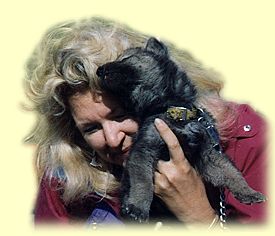
Telepathy is the universal language of the soul—used by all species and between species. It is the natural extension of intuition, an ability available to all, involving the sending or receiving of feelings, images words or energy over distance, transcending time and space. Dictionaries typically describe telepathy with phrases such as "the communication of thoughts or ideas using the mind." We've probably all had the experience of not being to get someone out of our mind for hours or days, then soon hear from that person by phone or email, or receive a card or gift from them. We often laugh at this and say, "What a coincidence! I was just thinking about you!" Actually, this is not a coincidence. It's a simple example of everyday telepathy at work. So is the example of when mothers "just know" their infants need them. Or when we "get a feeling" our dog somehow isn't right, and lo and behold a vet check shows that a health issue needed attention. When someone is thinking of us, writing a card or preparing to call us, or when someone we love needs us, we sometimes "pick up" on that message. We sense their energy reaching out to us. That's telepathy. The telepathy used in animal communication sessions works on that same principle. It is simply a more focused and intentional use of telepathy.

rescued and beloved mustangs
For me telepathy means being connected with the spirit and essence of another--beyond the body, beyond the personality. It is seeing, feeling, hearing and sensing the messages from their soul. It is a sacred experience to be that close to animal's soul, and a trusted privilege to pass on their messages to their people. I am extremely grateful for the opportunity to have this experience with the souls of animals and the people who share their lives and love them. I believe that in the not-too-distant future a great majority of humans who love animals deeply will remember the natural language of telepathy, and will easily and effortlessly talk with their animals themselves. Animal communicators may still be called upon for helping with complex problems, and for continuing to support people in refining their telepathic skills, but I believe telepathic communication between animals and their people will someday be as common as email is today between humans. For now, I hope the information on animal communication on this web site may serve to both inspire you and help you practically. I wish you a lifetime of joy and love with the animals in your lives.
To learn more about how telepathic animal communication works (by whatever name--animal communicator, pet psychic, telepathy, interspecies communication, dog, cat or horse whisperer) browse through the books in our resource section. If you are interested in learning more about my background and training, read About Us.
Some of my favorite animal communication books:


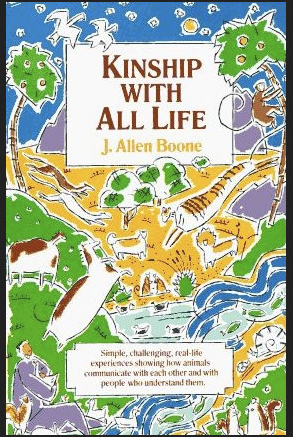
Learn the basics of Animal Communication with Teresa's On Demand Webinar:
Introduction to Telepathic Animal Communication








